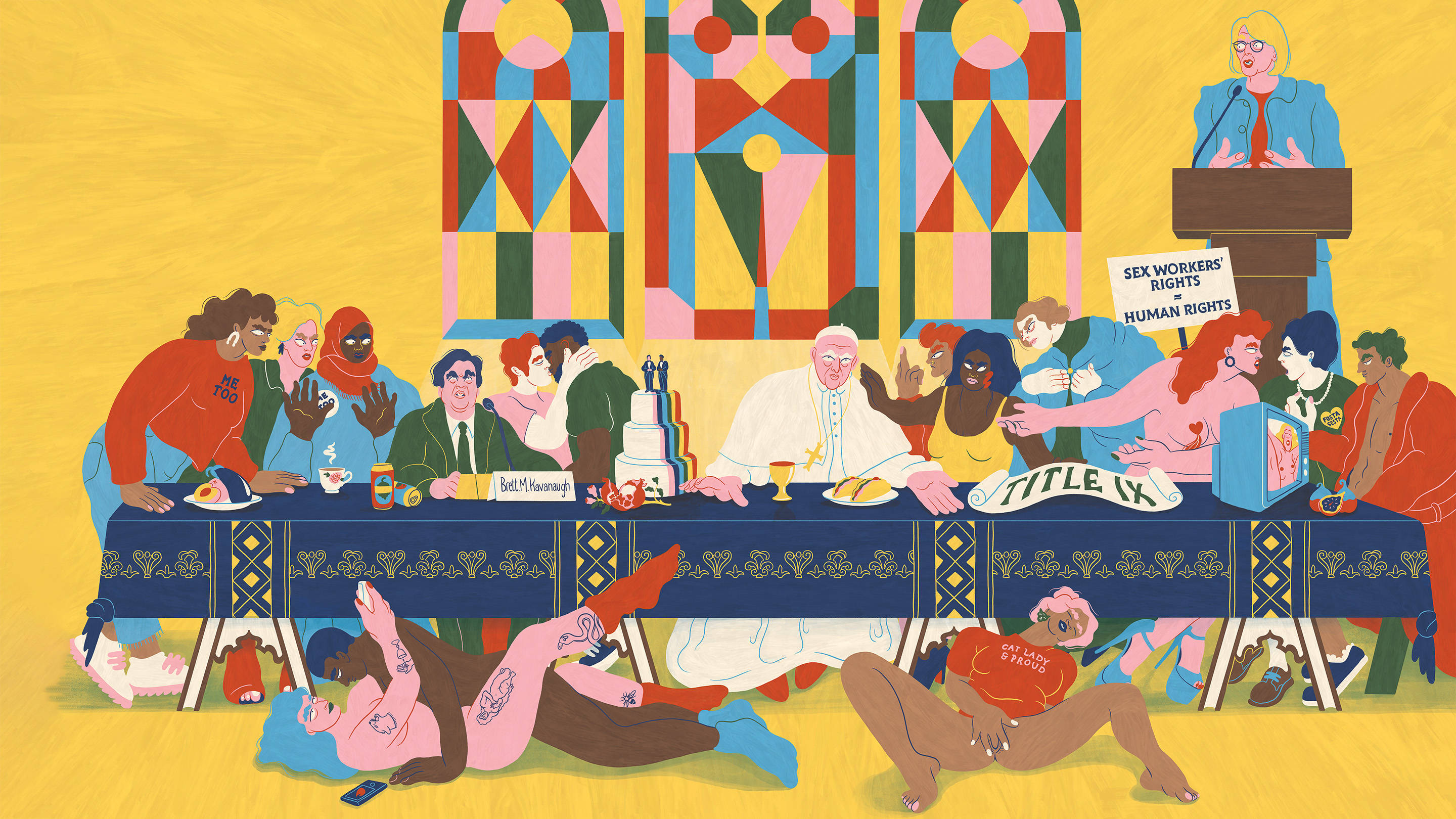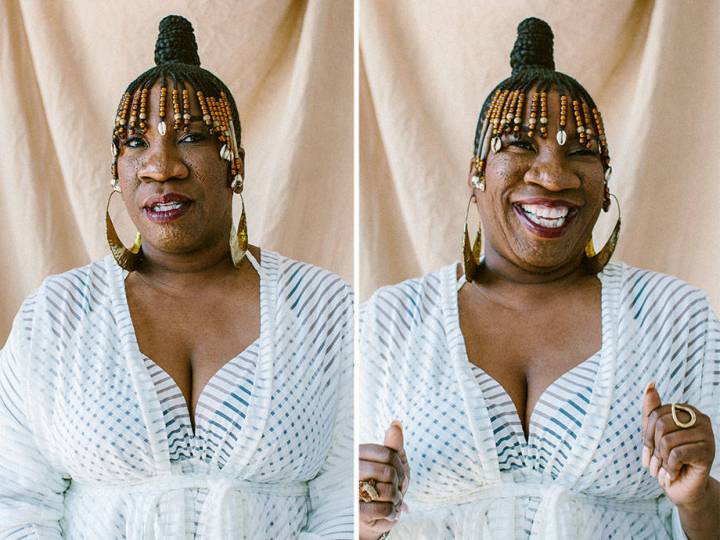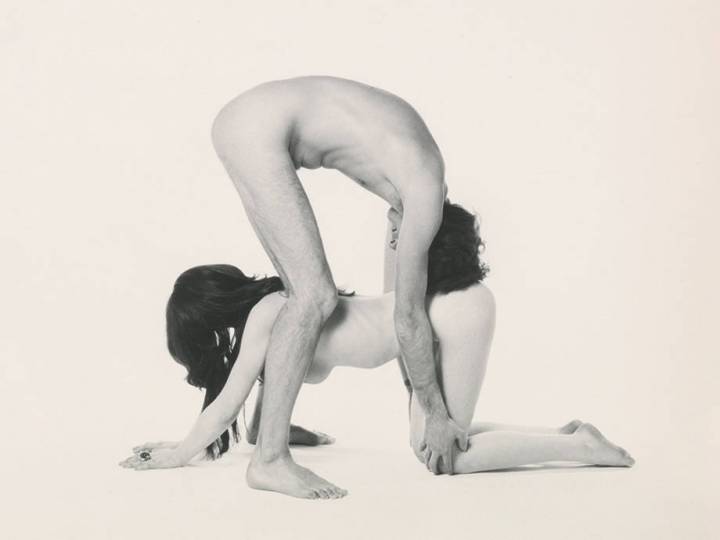
Our Country, Which Art in Panic
I teach a university class called Gender, Sex and the Law for which I give a series of lectures on Title IX, the 1972 antidiscrimination law that guarantees equal access to education, regardless of sex, at schools that receive federal funding. Lately my lectures have focused more on due process and Secretary of Education Betsy DeVos’s recently proposed changes to the law, some of which would bolster the rights of those accused of sexual assault.
Without a doubt, campus sexual misconduct violates the provisions of Title IX. But investigations of such violations are hardly fail-safe. Since 2011, the U.S. government has conducted 502 “investigations of colleges for possibly mishandling reports of sexual violence,” according to data from The Chronicle of Higher Education. My students saw compelling reasons for revising current Title IX procedures. They agreed that changing the burden of proof from what has been dubbed the “50 percent plus a feather” standard to a “clear and convincing” one would better serve justice; anything less than that simply wasn’t tough enough, given the gravity of assault charges. They also believed that mandated faculty reporting, which infantilizes students by taking the decision to report an alleged assault out of their hands, should be ended.
My students smartly debated whether a college administrator or our criminal justice system is better suited to adjudicate sexual-assault charges. They questioned the validity of the term sexual misconduct, noting that it collapses harassment and rape into one bucket of behavior. They worried about the consequences of ill-equipped employees implementing policies; training tools such as Title IX instructional videos and multiple-choice quizzes, for example, reek of school administrators doing the bare minimum, my students said.
Somehow sex, in addition to the sexual predator, has become the enemy.
This anecdote is representative of the current state of sexual politics and how, as pointed out by The New Yorker’s Masha Gessen in 2017, recent watershed moments have exploded into a full-blown frenzy across sex culture in America. As Gessen astutely summarizes, “Sex panics in the past have begun with actual crimes but led to outsize penalties and, more importantly, to a generalized sense of danger. The object of fear in America’s recent sex panics is the sexual predator.”
We as a society can agree that the most effective policies are based on reliable data and rational debate. Moral panic on the right and purity politics on the left interfere with our right to sexual safety, pleasure and free expression by encouraging political in-fighting and self-censorship. Both threaten to replace the exchange of facts and civil examination of controversial ideas.
While this tension may seem most prevalent in the public discourse surrounding DeVos’s Title IX proposals, there are myriad “watershed moments” in which civil policy-making has been supplanted by partisan uproar and triggered panic. Sex is at the center of every one of these debates. Consider the frequent trivialization of due process in discussions about Brett Kavanaugh’s confirmation hearings (even while Christine Blasey Ford’s testimony was compelling); the Supreme Court’s weighing in on religious bakers who refused to sell wedding cakes to homosexual couples; the controversial passage of FOSTA-SESTA; and the removal of adult content from Tumblr.
Outside politics, we’re contending with morality wars over slut- and body-shaming; the uncomfortable truth that both consent and harassment are not absolutes; never-ending reports of sexual abuse within the Catholic Church; unsubstantiated claims of homophobia and racism from the Hollywood elite; young people’s supposed disinterest in sex (the so-called “millennial sex drought”); and the national rise in STI rates. On any one day, any of these sex-culture stories vie for our attention, and for good reason. But in the face of outrage and the demand for rapid social change, unintended consequences have arisen. Somehow sex, in addition to the sexual predator, has become the enemy. Welcome to the sex panic of this generation.
We learn to shut up and sit down lest we face public condemnation and risk being attacked on the internet.
The uncompromising outrage of activists and survivors has no doubt drawn important attention to sexual misconduct and egregious criminal behavior. Outrage brings awareness to long-buried issues in desperate need of justice. Outrage has resulted in the #MeToo movement, the formation of Time’s Up and the galvanization on display at the annual Women’s March. Outrage is a righteous and necessary vanguard in a free society.
Outrage is different from sex panic, however. The former exposes; the latter silences. Panic rejects nuance, debate and disagreement in favor of party lines and swift action. Panic has resulted in the rise of cancel culture and the dismissal of due process. By the time we can consider whether we’re in a full-blown cultural panic, rational thinking has already been cast aside. It becomes risky to ask for facts and data. In a sex panic, it becomes imprudent to question the extent to which sex-based discrimination exists. It becomes dangerous to suggest that all sexual violations, and all experiences of sexual violence, are not equivalent. As a consequence, we learn to shut up and sit down lest we face public condemnation and risk being attacked on the internet.
While moral panic around sex is nothing new, moral panic is more about social control than ethical guidelines for how we should get along with one another. We have long fretted over how women dress, move, think and speak. Young New York City women of the late 1800s could be arrested for simply going to dance halls because it was seen as a threat to social order. Flappers in the 1920s were deemed amoral for their bobbed haircuts and dance-floor shimmies. Rihanna caused an uproar when she wore a see-through crystal gown to the 2014 CFDA Fashion Awards. Some wondered if she was a suitable role model for today’s youth. These are moral panics.
This perfect storm has also created a culture in which we desire nothing more than for our friends and neighbors to agree with our interpretation of a “moral, just society.” No one definition, however, can be truly inclusive, informed or progressive. Instead, well-intended attempts to regulate morality only heighten panic by promoting, for example, sex-trafficking laws that ignore racist immigration policies and degrade sex workers as second-class citizens, or online-pornography regulations that impinge on free speech and artistic expression.
We don’t need to look outside our borders for evidence that today’s sex panic has been bubbling up for years. The state of Utah passed a resolution and the Republican Party issued a proclamation in 2016 stating that pornography is a public health issue, despite the lack of reliable evidence proving it is. Since 2017 the left has rushed to shame anyone accused of any offense, from Senator Al Franken to comedian Aziz Ansari. Crucial conversations, including lessons on consent in public-school sex education, are buried under louder tweet storms about toxic masculinity and the power of the patriarchy. Awkward sexual encounters continue to be conflated with the worst of accusations. And then: If he’s accused, he must have done it.
That particular assumption was evident at Pomona College’s annual Great Debate event in the spring of 2018. The liberal arts college, situated outside Los Angeles, provided a forum for discussion about campus sexual assault. The panelists included author Roxane Gay, Northwestern University film studies professor Laura Kipnis and attorney Brett Sokolow, president of the Association of Title IX Administrators and CEO of TNG, a risk-management consulting and law firm.

The NAACP’s national office and the Missouri state branch both oppose DeVos’s proposed changes to Title IX protections.
That line of thinking concerns Lara Bazelon, director of the Racial Justice Clinic at the University of San Francisco School of Law. “No matter the evidence, supporters of victims’ rights are willing to suspend procedural justice or the rule of law to expel the accused,” she says, even though “due process is the bedrock of our system.”
Bazelon’s perspective is informed by her years of work representing poor people and those who are statistically likelier to be oppressed by the judicial system. Such oppression disproportionately maps onto communities of color. Black male students are more severely impacted by Title IX, Bazelon says, much as black men are overrepresented in the prison system. Gay was talking specifically about privileged men, but assuming accused sexual violators will “be just fine” in the absence of due process glosses over systemic racism on campuses and in courtrooms across the country. This pattern extends beyond the formal criminal justice system to the internet and its nurturing of cancel culture.
Controversially, the NAACP’s St. Louis County branch has come out in support of Missouri state legislation that would implement DeVosian revisions. “The denial of due process at Missouri’s colleges disproportionately impacts African American men and that’s why we call for immediate due process reforms,” John Gaskin III, the chapter’s president, said in a press release. The NAACP’s national office and the Missouri state branch both oppose DeVos’s proposed changes to Title IX protections, however, commenting that while Missouri needs to protect civil rights, rewriting Title IX is not the pathway.
If you’re concerned about sexual violence and also care about justice, due process and people of color, where are you going to stand?
As galling as it is to find oneself in agreement with DeVos, this does not make one a Trumpist shill. The current political climate means “you’re either on team accused or team accuser,” says Bazelon. “Due process gets pushed aside, because in this scenario, once you’re on your team, it doesn’t matter what the facts are. The left offers full-throated support for the rights of the accused in criminal cases—until it comes to sex offenses. The assumption is that if someone is accused of sexual misconduct, they must be guilty.”
The Cost of Disagreement
In late 2018, Bazelon penned a New York Times op-ed piece titled “I’m a Democrat and a Feminist. And I Support Betsy DeVos’s Title IX Reforms.” After suggesting that due process is integral to antiracism, Bazelon received threatening calls saying that she was a moron, that she hates women and that she should die or be fired. She was publicly attacked on Twitter too, at times by people who privately told her they agreed with the fundamental importance of due process. The Twitter attacks largely came from liberals.
Before publishing her op-ed, Bazelon had braced herself for backlash. But she could never have predicted the accusations of racism—particularly confounding given that her life’s work has focused on racial justice. If you’re concerned about sexual violence and also care about justice, due process and people of color, where are you going to stand? It’s a question for which Bazelon has no answer.
More mainstream figures have been similarly excoriated for arguing that unwanted touching, rape and pedophilia are qualitatively distinct. One such figure is actor Matt Damon, who suggested as much in the days after The New Yorker published its first exposé on the alleged sex crimes of Harvey Weinstein. Without question, all the aforementioned acts must be confronted and eradicated, Damon insisted. “Every woman who comes forward with one of these stories deserves to be listened to and heard,” he said.
Damon and others who may share his views have good reason to suggest we need to distinguish between behaviors that fall on a continuum from “bad sexual manners” to “sexual assault.” Yes, this continuum exists within a patriarchal matrix of domination. But when we conflate sincerely apologetic men who may have behaved crudely, such as Senator Franken, with truly criminal men, such as alleged repeat offender R. Kelly, “the clear signal to men and young people is: Deny it. Because if you take responsibility for what you did, your life’s going to get ruined. But if you deny it, you can be in the White House—you can be president.” Damon said this in an ABC News interview.
The Pursuit of Truth
When it comes to sexual-misconduct cases on campus, “a lot of times both students are credible,” says Patricia Hamill, a Philadelphia-based attorney who has represented more than 100 students accused of Title IX violations. She explains how crucial misunderstandings can have unequivocally serious impact: “She says, ‘Do you have a condom?’ He hears, ‘That was a yes.’ But she could mean ‘I’m trying to slow you down.’ Or ‘I’m not sure.’ ” Or perhaps she’s trying to create a pivot so she can figure out what to do.
Because alcohol or drugs often accompany sexual situations on American campuses, this creates complicated situations for adjudication. In our current climate, asking if the people involved were drunk can be viewed as blaming the victim. But equating proper investigation techniques with victim-blaming ignores the truth that alcohol consumption is often a factor in how details are recollected, Hamill says. “In murky situations, both parties very much believe their perception of what happened,” she explains.
MORE FROM THE GENDER AND SEXUALITY ISSUE

20Q: Maren Morris
The country singer has something to say about how her genre handles women, skin and outspokeness

Wasteland Wonderland
How three renegade curators are building an ethereal world of weirdness in the California desert

The 2019 Playboy Sex Survey
Playboy polled 1,000 participants on their sexual preferences; here's what we discovered

The Playboy Interview With Tarana Burke
A candid conversation with the activist who launched Me Too more than a decade before Weinsteingate

Members Only
A look at the very small (but sometimes fairly large) club of Playboy's nude men

Apocalypse Then
An oral history of the memorable Playmate scene from Francis Ford Coppola’s Oscar-winning classic

The Long Road to President Pete
South Bend's mayor has captivated millions. Can he sustain his momentum through debate season?

Here’s Hoping the World Is Ready for Avan Jogia
He’s energetic, slick and clever, and he celebrates gender and sexuality as much as he questions it
Another complication is when a survivor continues to contact an alleged assaulter. In one highly publicized case, Columbia University student Emma Sulkowicz accused fellow student Paul Nungesser of having raped her in 2012. Two years later, after he was cleared of responsibility by a university disciplinary panel, she turned her experience into performance art, which gained national attention from The New York Times and The Washington Post, among other outlets. In the days immediately following her alleged attack, Sulkowicz had messaged Nungesser numerous times, her tone ranging from polite to friendly.
“When asked why they texted the next day as if nothing was wrong,” Hamill explains, “some say, ‘I don’t know why I texted that. I was trying to understand what happened. It took a bit of time to realize I was raped.’ ” It’s important to have a trauma-informed framework that’s sensitive to such inter- and intrapersonal responses that may seem odd to outsiders. “But that can’t be the starting place for adjudication,” Hamill argues. As a judge stated in the 2016 Doe v. Brandeis ruling, which involved two male students who’d been romantically involved, “Whether someone is a victim is a conclusion to be reached at the end of a fair process, not an assumption to be made at the beginning.”
In line with that thinking, Sokolow tells me about a call he once received from administrators after a gay male student attempted to bring Title IX charges against the school. The student was aggrieved by the fact that Chick-fil-A had catered an on-campus training program. Chick-fil-A’s president opposes marriage equality and the company has been accused of homophobia.
Students are free to push administrations to make better choices. “But you can’t say that eating Chick-fil-A is sex-based discrimination,” Sokolow says. A decade ago, “this claim would have simply been sent away with the clear understanding that the student was not discriminated against.”
In California, a state court recently ruled that students accused of sexual misconduct have the right to a hearing and to cross-examine their accusers.
Should low barriers of proof and unchecked claims of violation continue to be publicly classified as legitimate, one fear, Sokolow says, is that we could find ourselves in situations where “men on campus don’t want to mentor female faculty. Hugs are absolutely prohibited in the campus workplace. And while there is good reason for concern about lecherous colleagues who cop a feel or physically abuse their positions of power under the pretense of an affectionate hug, this prohibition cuts two ways. A workplace so sterile you can’t express affection for your co-workers is not a place people want to work.”
In California, a state court recently ruled that students accused of sexual misconduct have the right to a hearing and to cross-examine their accusers. As a result, colleges across the state prepared to overhaul their procedures for addressing Title IX complaints, including halting the single-investigator model, in which campus investigators serve as both sleuth and judge.
But what else can be done? For one, a prioritization of education is necessary. This means reeducating both students and the public about due process and the judicial system—important foundations of U.S. democracy. It also means discussing with young people the nuances of consent and the realities of sexual desire. Some argue that a generational shift in understanding is already under way and that the “millennial sex drought” is temporary but a sign of change. Hamill, the mother of two sons and a college-age daughter, says, “I’m encouraged that younger people are getting better at talking about what they want sexually. People are being up front about their desires.”
This doesn’t mean all truth is relative.
For adjudication to be just and fair, we need both due process and more information about trauma. This doesn’t mean coddling, which alarms the political right, but understanding that victims may be extremely sensitive or seem dispassionate, and in addition to the fight-or-flight response, traumatized people can also have spotty memories or become emotionally or mentally catatonic. None of these displays prove or disprove a case. While campuses and victim-support services are incorporating this trauma-based understanding, it’s important to note that this approach is based on controversial research. We must be willing to hit pause; we can’t be afraid to admit we just don’t know yet.
This doesn’t mean all truth is relative. It means we as a society need to be measured in our assessments. It also means shifting our attention. According to Justin R. Garcia of the Kinsey Institute, “For policy-makers who aren’t thinking about sex and gender every day as researchers do, legislating these concerns can easily become panics.”
In a culture that fails to prevent rape, harassment and assault, no one is unscathed. It’s time to turn our focus from survivors and victims to the perpetrators and bystanders. We must all work to revive an ethics of care and put our relations with others at the center of moral action. Otherwise our sense of truth, justice and morality will continue to become mired in a widespread, unchecked cultural panic—and sex will remain the enemy.






